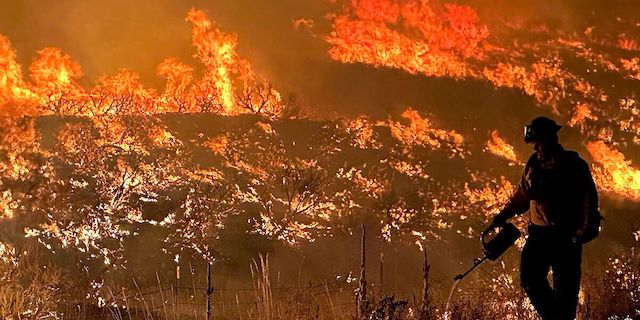Private Treaty February 2025
Pacific Cattle Angus, Sim-Angus, and Simmental range-raised production fall bulls available by PRIVATE TREATY FEBRUARY 2025 Carl Wisse • carl@pacificcattle.com www.pacificcattle.com • 509-539-6850 • Eltopia, WA
Published 8:46 am Friday, January 31, 2025

Damage from wildfires and other disasters has surged in recent years while rebuilding costs have also spiked, raising home insurance costs for Oregonians.
The upside is that unlike tornados, hurricanes, floods and other natural disasters, neighbors can band together to decrease their vulnerability to wildfire, experts say.
“We need entire communities to mitigate, so we can break that chain of conflagration,” said Michael Newman, general counsel for the Insurance Institute for Business and Home Safety, during a recent legislative hearing.
Sen. Jeff Golden, D-Ashland, said he’s aiming for Oregon to develop a statewide network of neighborhood cooperatives who can be rewarded by insurers for certified wildfire risk-reduction measures.
“That is the basic shape of the partnership we have in mind,” Golden said.
It won’t be possible to “suppress or control out of this wildfire crisis,” but homeowners can harden their homes by clearing defensible space around them and installing roofing and siding that’s less flammable, among other measures, said Newman.
“When we can get the policy levers working together to help us all collectively reduce our risk against a standard that’s grounded in science, and is achievable, effective and relatively affordable, that’s when we are really going to be able to tackle this crisis,” he said.
Even as insurance premiums have increased, they haven’t kept up with the financial burden facing insurance companies: In 2023, they paid out $1.12 in property claims for every $1 received in premiums, said Kenton Brine, president of the Northwest Insurance Council.
“Clearly, that is not a sustainable business model for insurers,” Brine said during a recent legislative hearing.
Oregon’s catastrophic losses in the 2020s have exceeded $4 billion, or four times as much as the previous four decades combined, mostly owing to wildfire but also due to high winds and winter storms, said Andrew Stolfi, director and insurance commissioner at the state’s Department of Consumer and Business Services.
Despite these massive losses, “no insurer has left our state due to wildfire risk,” Stolfi said. “We continue to have a competitive insurance market.”
Between 2018 and 2023, insurance premiums for Oregon homeowners jumped more than 50%, from $582 to $886 annually, owing partly to devastating natural disasters in recent years, he said.
Though home insurance is still more affordable in Oregon compared to many other states, that probably doesn’t mean much to consumers experiencing double-digit increases in premiums, Stolfi said.
“Some of these pressures are cyclical and are starting to ease, but it’s doubtful premium rates will suddenly drop below 2020 prices,” he said.
Home insurance non-renewals rose 11% between 2018 and 2023, from 7 non-renewals per 1,000 policies to 7.8 non-renewals per 1,000 policies. However, non-renewals had declined between 2018 and 2020, falling to 3.5 non-renewals per 1,000 policies, so the rate has more than doubled since then.
With the recent wildfires ravaging Los Angeles expected to result in $30 billion in losses, the impacts will be felt in the insurance market for some time to come, said Brine of the Northwest Insurance Council.
“It will be a minute while the insurance industry recovers from the losses it’s already enduring,” he said.
Availability of insurance is key to ensuring affordability, as the burden of paying out claims is currently spread among too few insurance companies, Brine said. If more become more confident about providing coverage in the region, that will bring down costs for homeowners.
“What we need is to attract more insurers fighting for your business,” he said. “That is the way prices will stabilize and eventually discounts will be offered.”